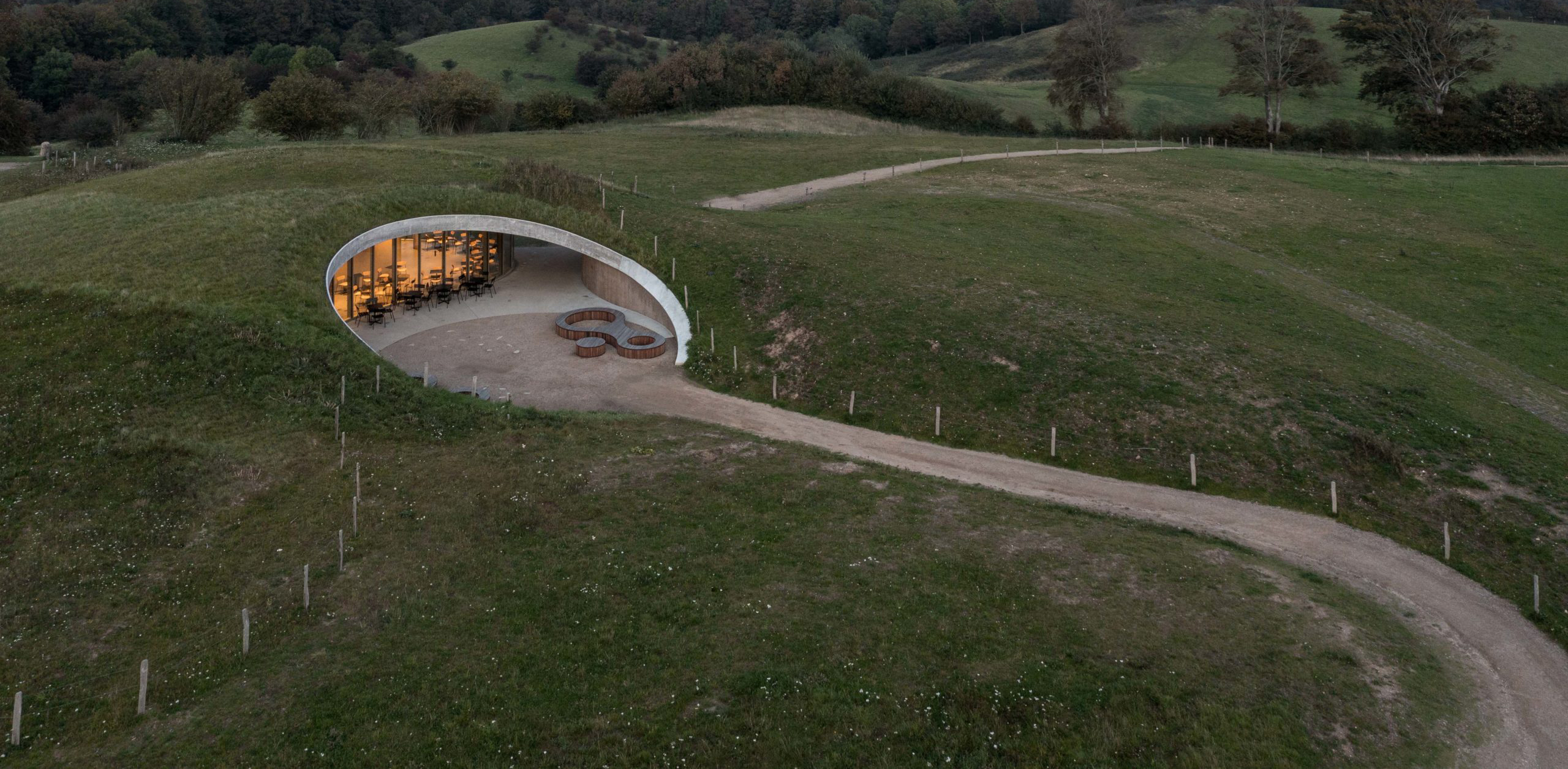Architizer is delighted to reveal the winners of the 2025 Vision Awards! We'll continue celebrating the power of architectural representation — get on the program mailing list by clicking here.
Drawings ask us to reimagine what we see between the lines. As architecture in their own right, they tell stories of spatial experience and organization from many angles. For hybrid drawings and composite graphics, few firms have created as distinct a style as LTL Architects. Known for a type of visualization called “overdrawing,” the team has developed a hybrid drawing style to rethink how to illustrate spatial ideas. At its core, their work organizes multiple stories and types of narratives into a single frame.
Hybrid drawings can be made by mixing media or styles, or they combine multiple views, media or perspectives together. The idea is to layer information. In LTL’s overdrawing technique, layering is defined by visual hierarchy, hand sketching and textures. They “overdraw” with multiple layers of drawings on top of one another to create depth. Here, layering relates to color, line work and how they think about opacity. As LTL explains, the technique aims to resolve the split between traditional forms of architectural representation (drawing by hand, sketching, and hardline constructions) and generative immersive representations.
The drawings combine what works best from the overlaps of disparate media and methods, through an active looping exchange between scanners, printers, software, and parallel rules. Color, tone, and surface qualities from digital renderings integrate with lines, edges, and details from 3H leads on 4mm Mylar. The following work showcases how LTL approaches Overdrawing through a mix of different projects with diverse programs, scales and building systems.
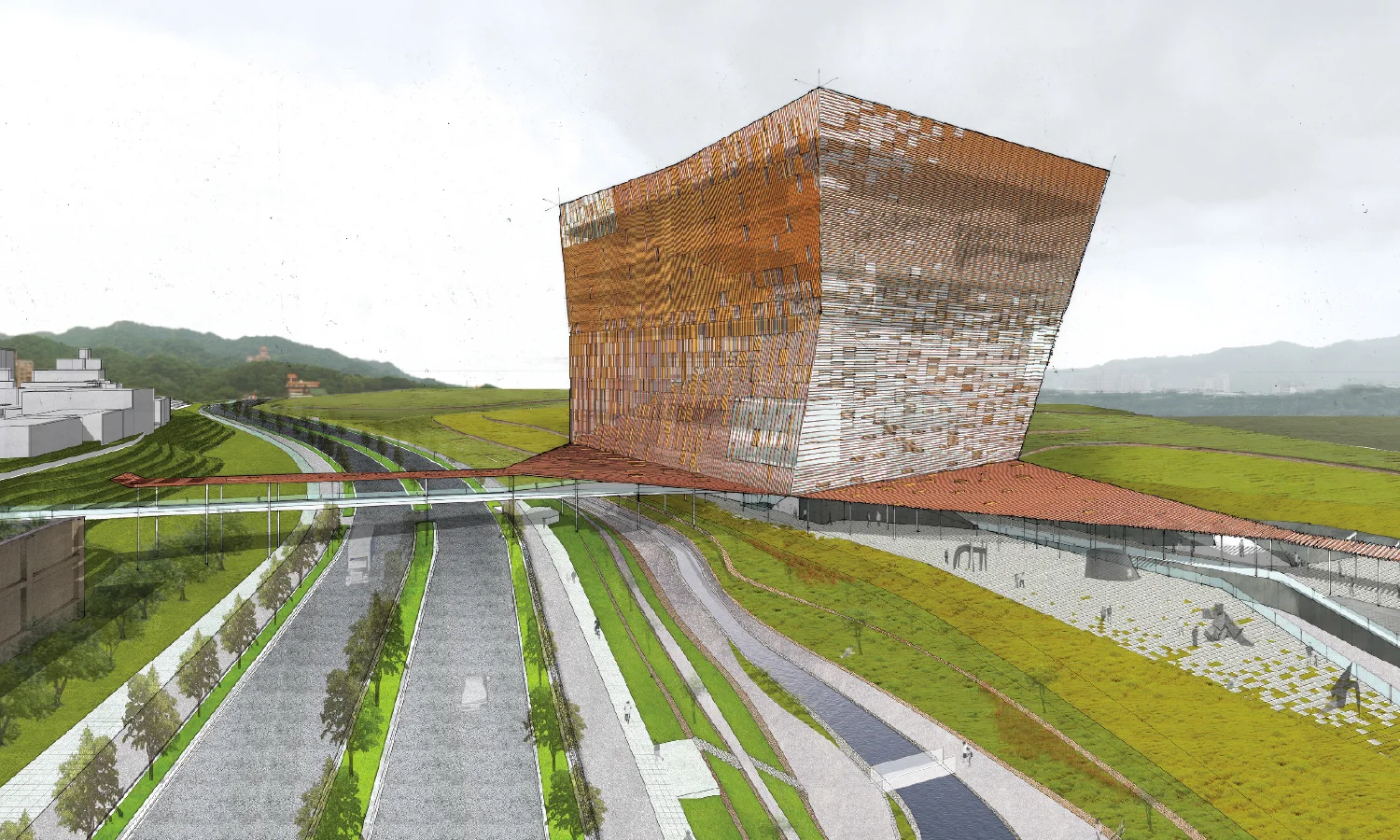
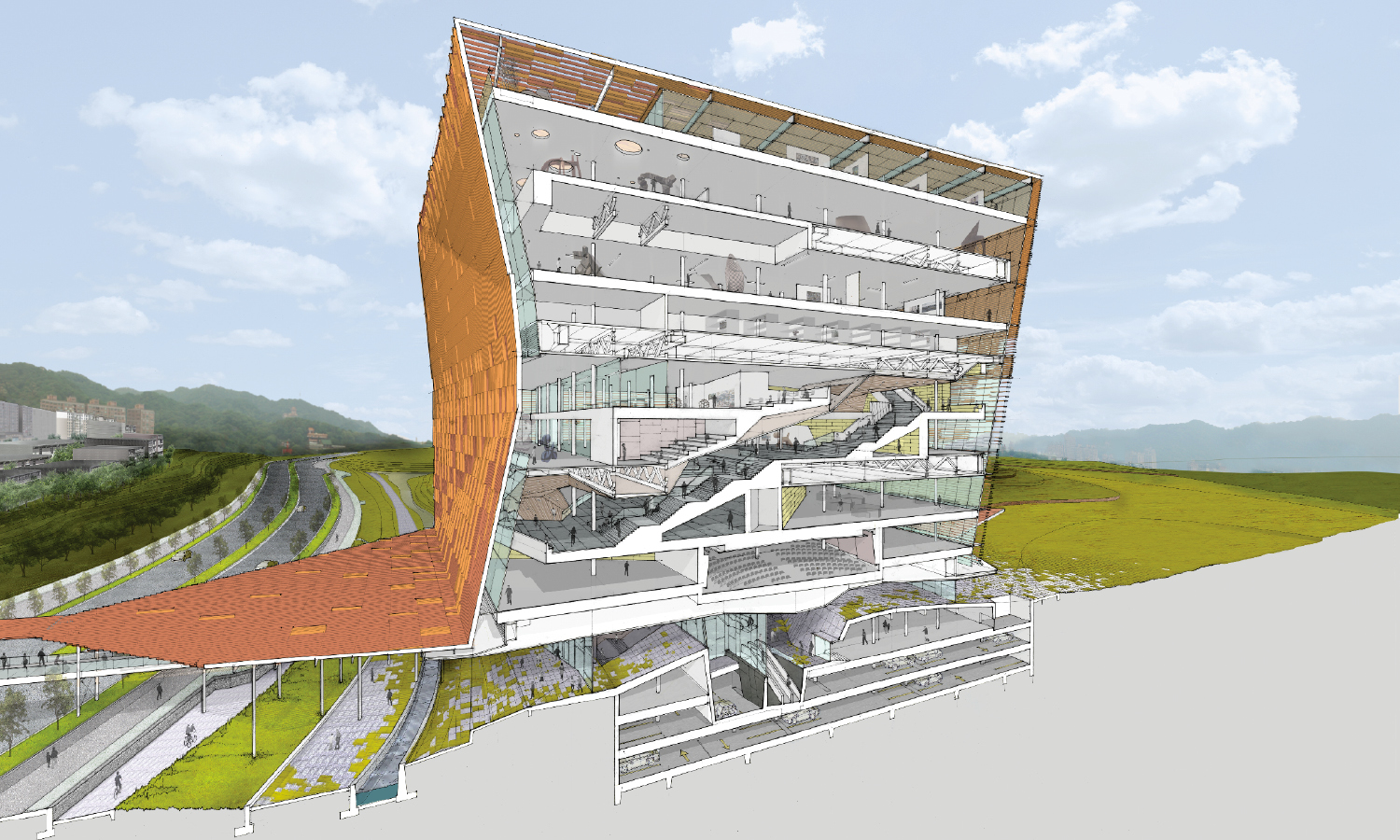
New Taipei City Museum of Art
Some of LTL’s best known work is their section drawings and perspectives. Here, the architects explore the possibilities of overdrawing through an acute attention to experience, scale and movement. Their competition entry for the New Taipei City (NTC) Museum of Art seamlessly integrates public life with the experience of art. A resolution of simultaneous opposites, the museum is at once an object building — a logical response to the limitations of site coverage — and an extension into the landscape.
As an iconic volume floating over an open plaza, the program is consolidated into a single identifiable prism; the terrain below is simultaneously sculpted to engage the multiple approaches and points of vehicular and pedestrian access to the site. As the landscape flows under the building, the ceramic skin stretches from the central mass across the adjacent park into a horizontal shading device, providing refuge from sun and rain and marking the entries and circulation routes into the museum.
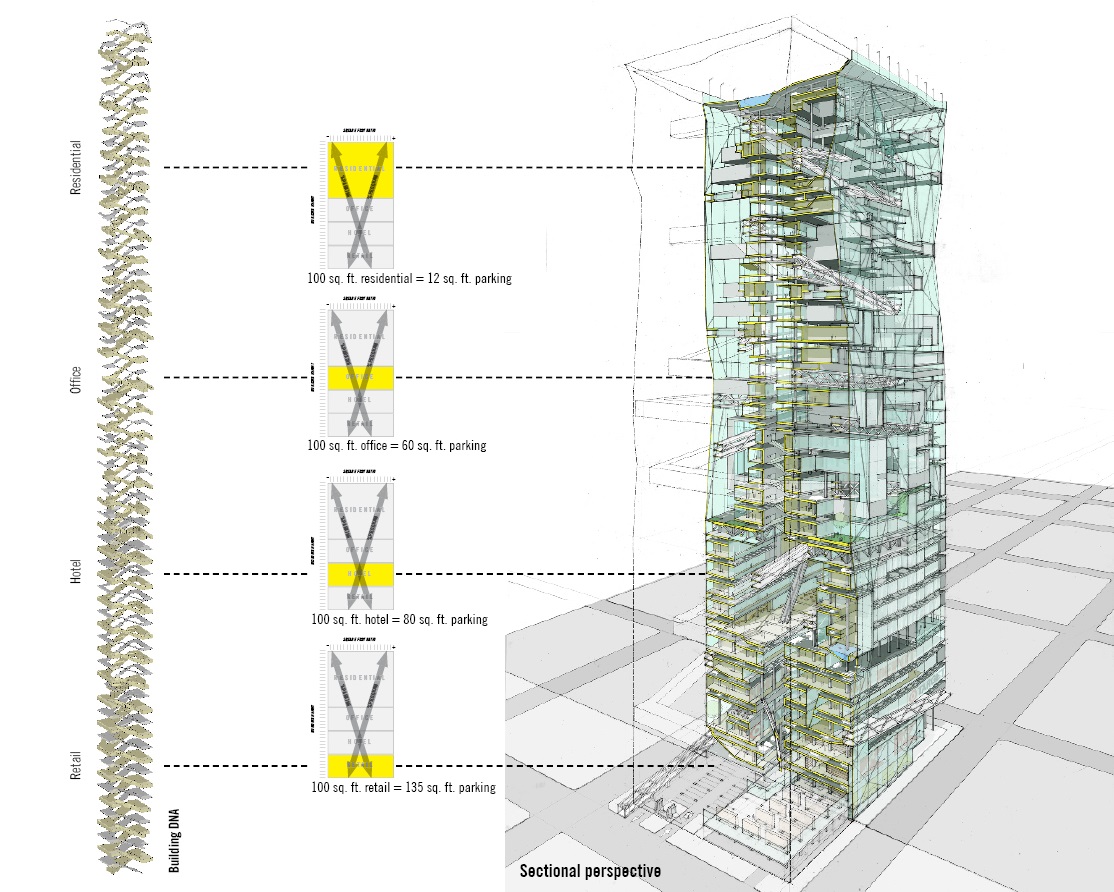
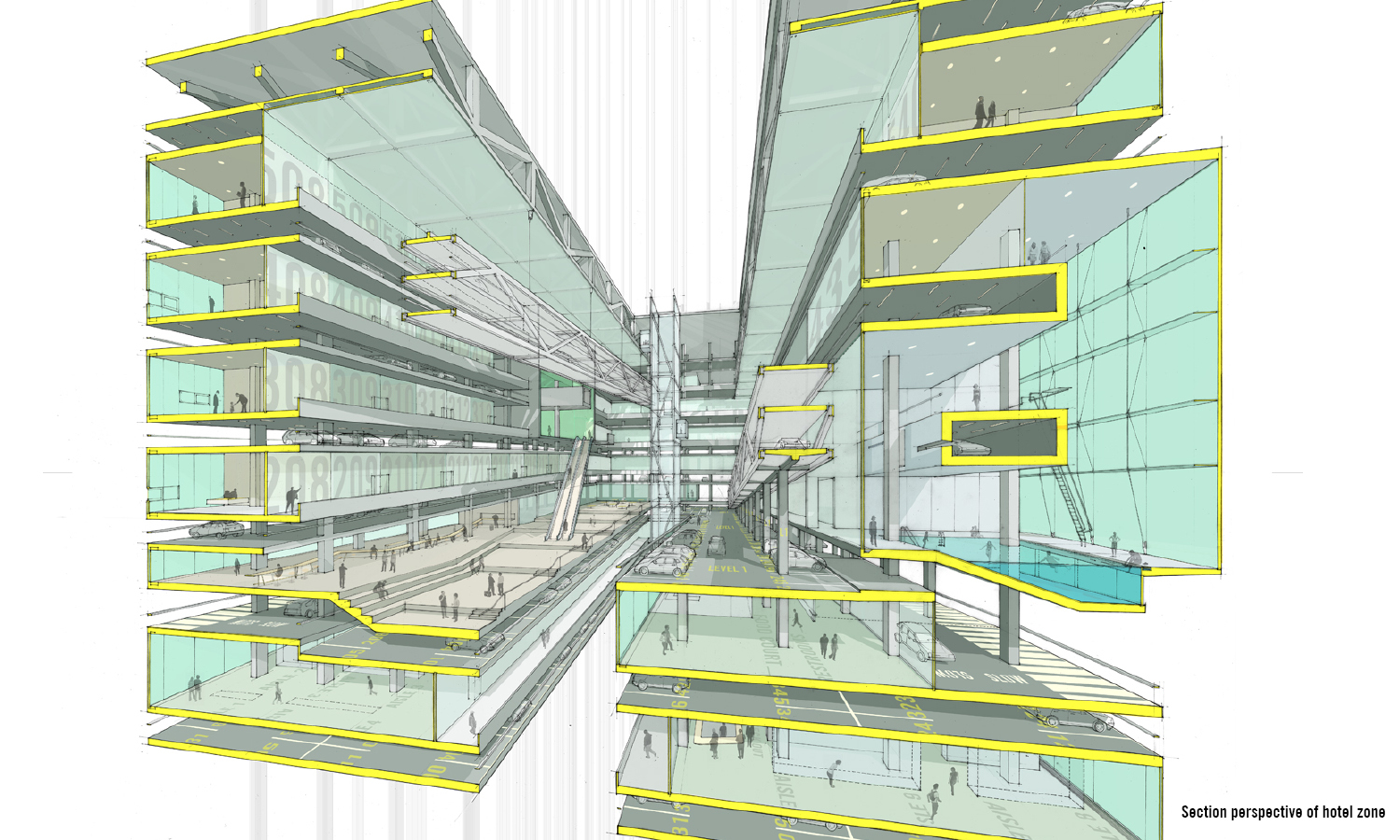
Park Tower
As one of the clearest examples of overdrawing, LTL’s Park Tower project shows how rapid computer-generated renderings are overdrawn by hand, with detailed development and design alterations to the initial form emerging in the process. These drawings are then scanned and recomposed with the original rendering, and this hybrid image is further digitally manipulated to capitalize on the qualities of both media.
For the U.S. Pavilion at the 2004 Venice Architectural Biennale, Architectural Record commissioned LTL to imagine the future of the parking garage. Using the possible future of clean and quiet electric cars as a catalyst, Park Tower envisions a drive-up skyscraper, intertwining a parking garage with a mixed-use sequence of programs, all without noxious fumes or excessive engine noise. While employing a commonplace mix of programs — retail space on the ground level, hotel and office space in the middle, and residential on the top — the tower intertwines in the manner of a double helix, a drive-through parking garage and a sandwich of inhabitable space. Suburban patterns are thus coupled with an urban building type and footprint.
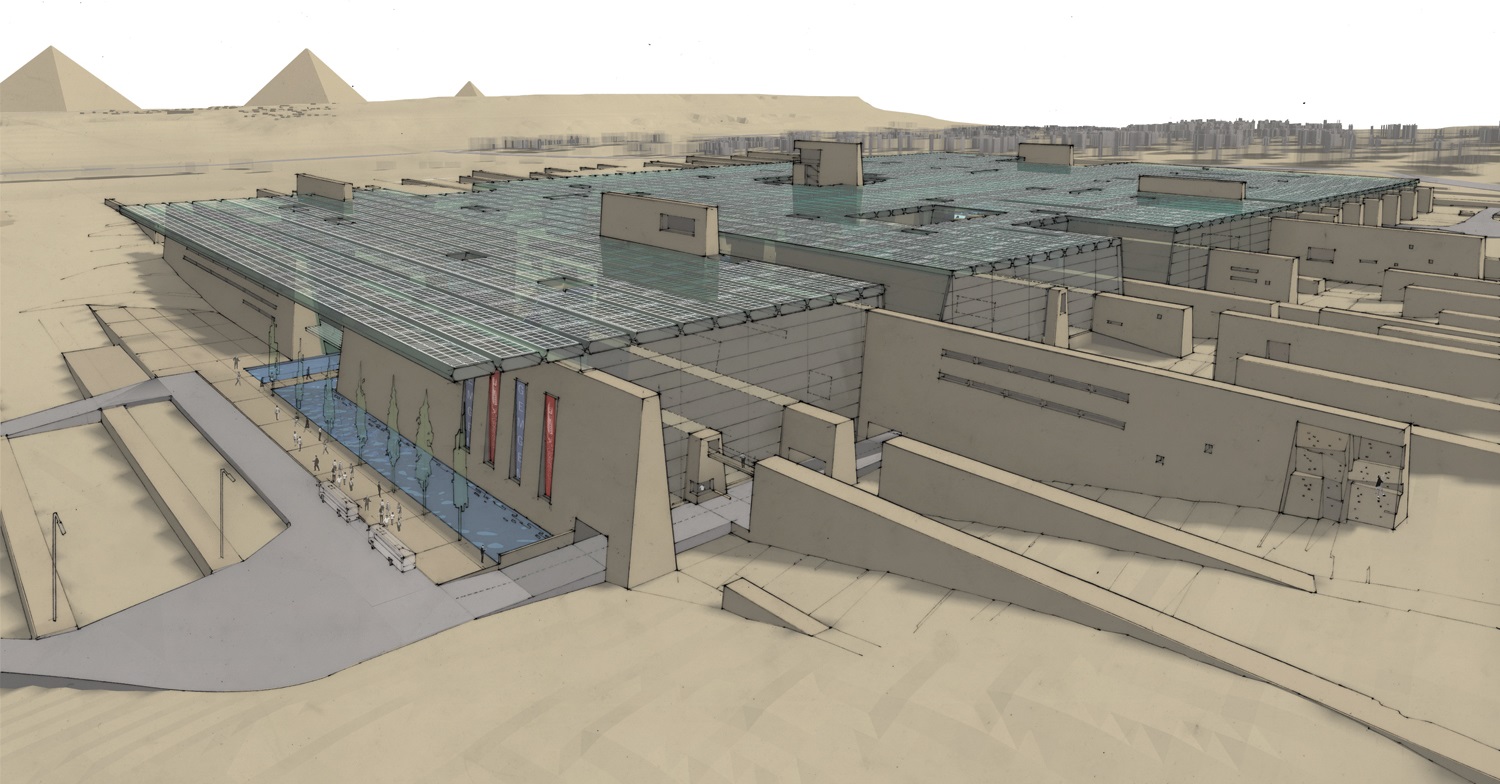
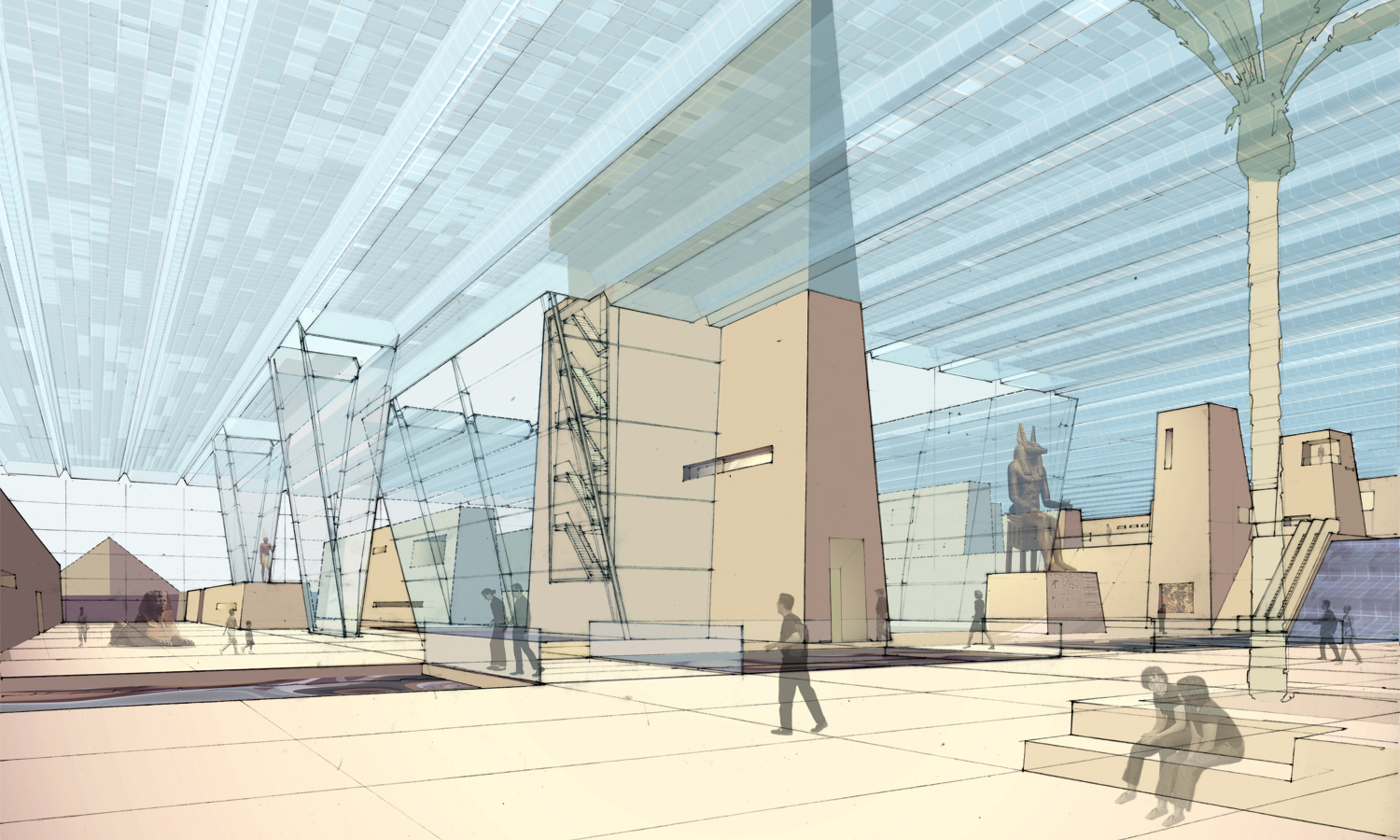
Great Egyptian Museum
As LTL explains, they see the power of multiple forms of representation. “Recognizing the simultaneous potential and limitation of both approaches, we seek to cultivate and encourage a search for a truly complex form of architectural representation, one that learns from both, steals selectively, and pays little heed to zealots on either side. This means inventing drafting, representational, and production tactics that short-circuit traditional protocols and patterns of work determined largely by software constraints. It calls for an agile exchange between line and color, between drawing and production, between manual and digital means of working in order to circumvent current frames of thinking for the benefit of continuing architectural vitality.”
The overdrawing technique is also used in interior perspectives and sections, providing a rich layering of materials and textures. In 2003, 1,557 architecture firms from 83 countries entered the competition for a museum to house more than 120,000 Egyptian artifacts, including the treasures of King Tutankhamen, at a site adjacent to the Great Pyramids. LTL’s design for the museum is predicated on the spatial exchange between ground and sky. Both solid and hollow, occupiable pylons striate the site, while a canopy of solar glass collects and filters sunlight, and the dynamic interplay between these features creates a new museum landscape. The canopy of glass embedded with photovoltaics provides enclosure, filtered light, and a source of energy for this museum in the desert. A structural grid of inverted glass-clad wedges supports a space frame, creating an updated version of a hypostyle hall.
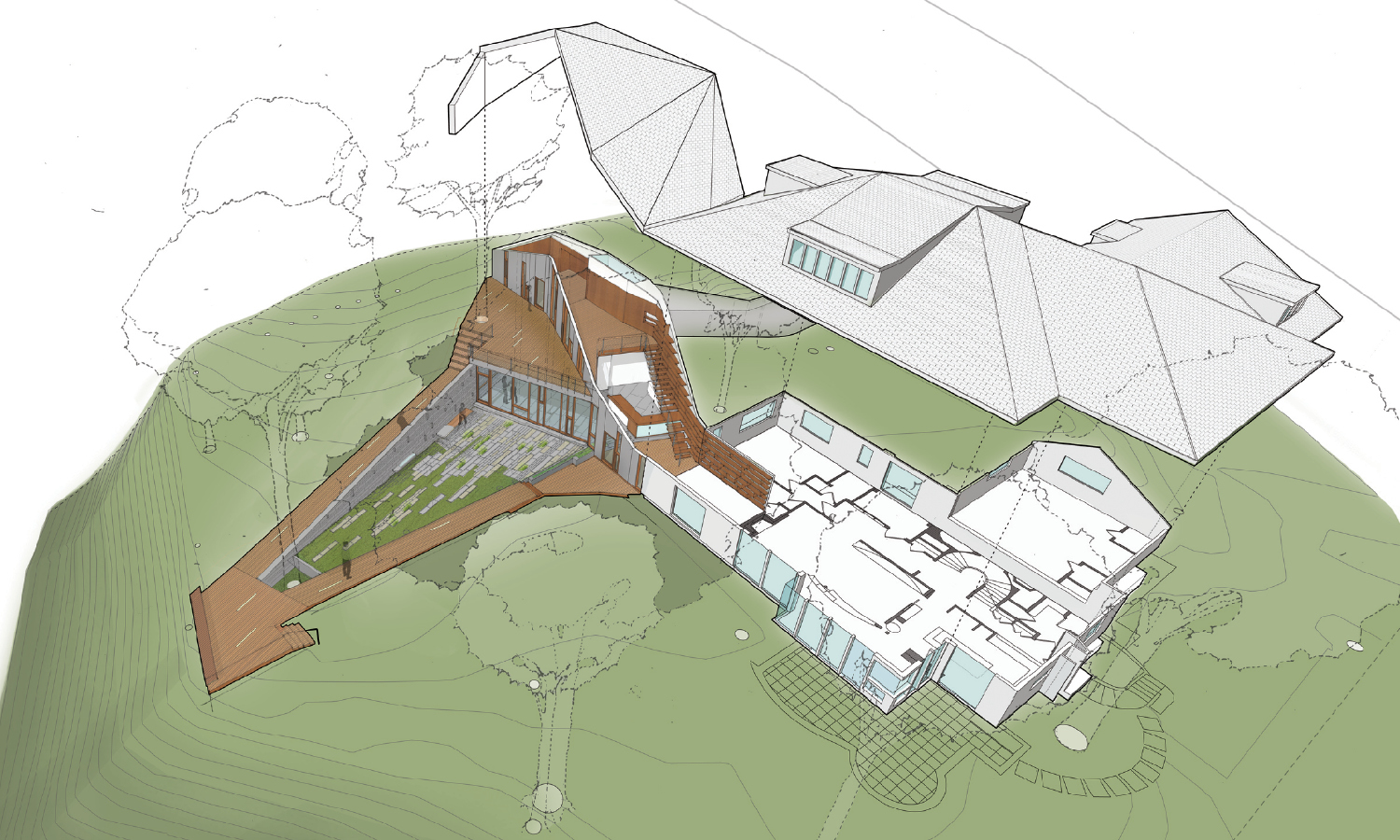
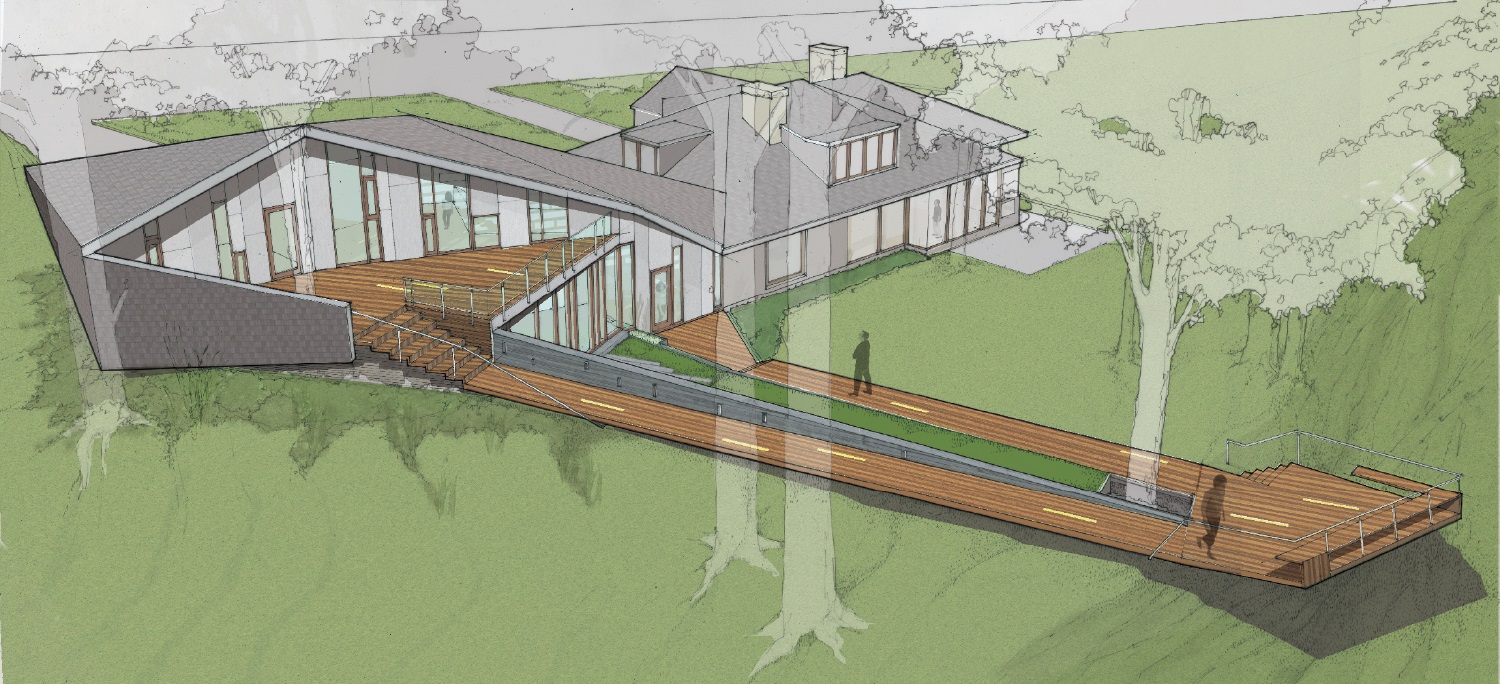
Switchback House
At a more intimate scale that also showcases a connection to the surrounding landscape, LTL shows how they approach drawing for residential projects. This addition to a single family home in the suburbs of Akron responds to the unique pressures of its site: an otherwise typical residential lot distinguished by a precipitous ravine and densely wooded with mature trees. A guest bedroom, shop, office and gallery nearly double the size of the existing small residence, while the form of the new structure negotiates four distinct directional pressures: a steeply rising topography to the west, automotive entry to the north, connection to the main house to the east, and engagement of the dramatic ravine views to the south. The geometry of the addition simultaneously navigates the several large specimen trees that occupy the site, minimizing tree removal and conforming to existing open areas.
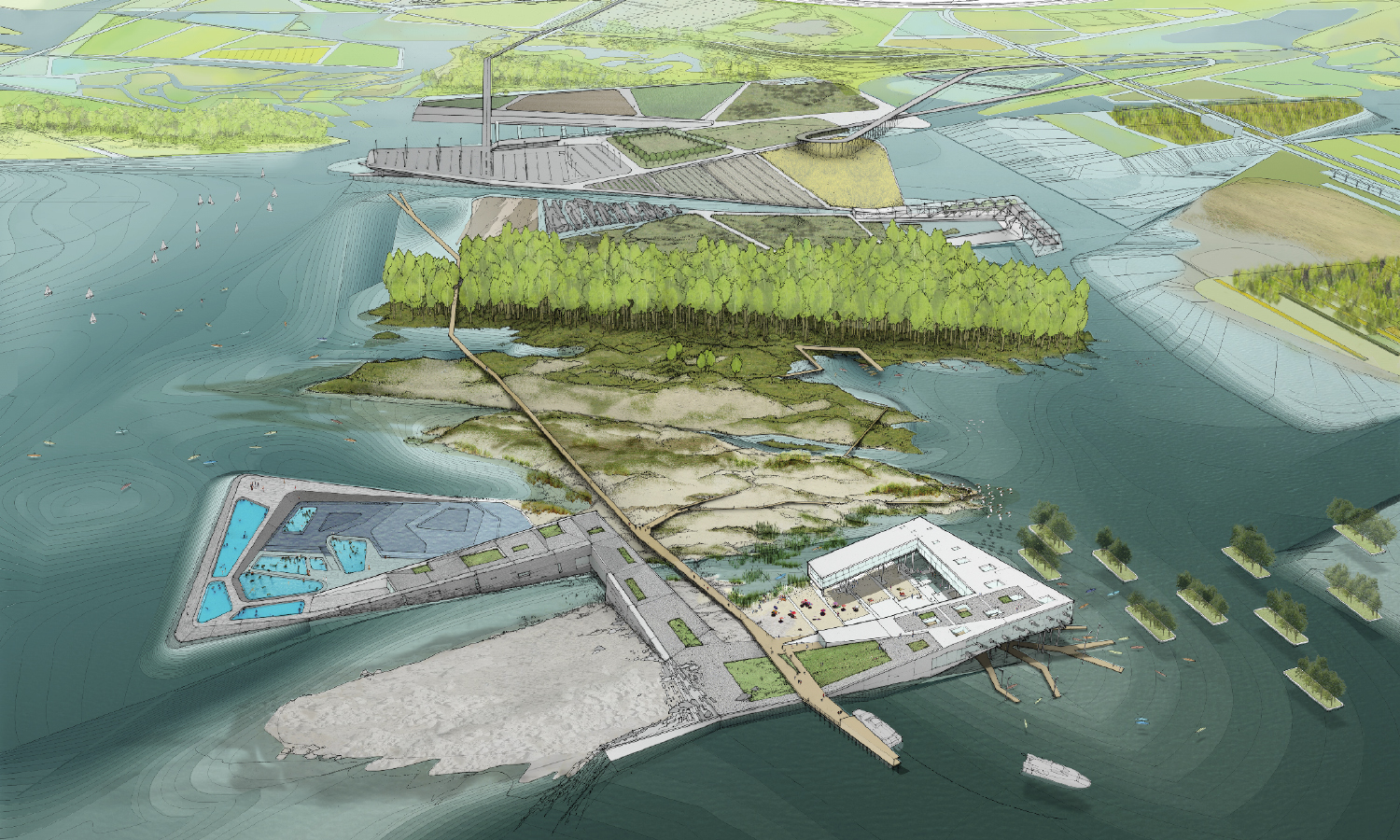
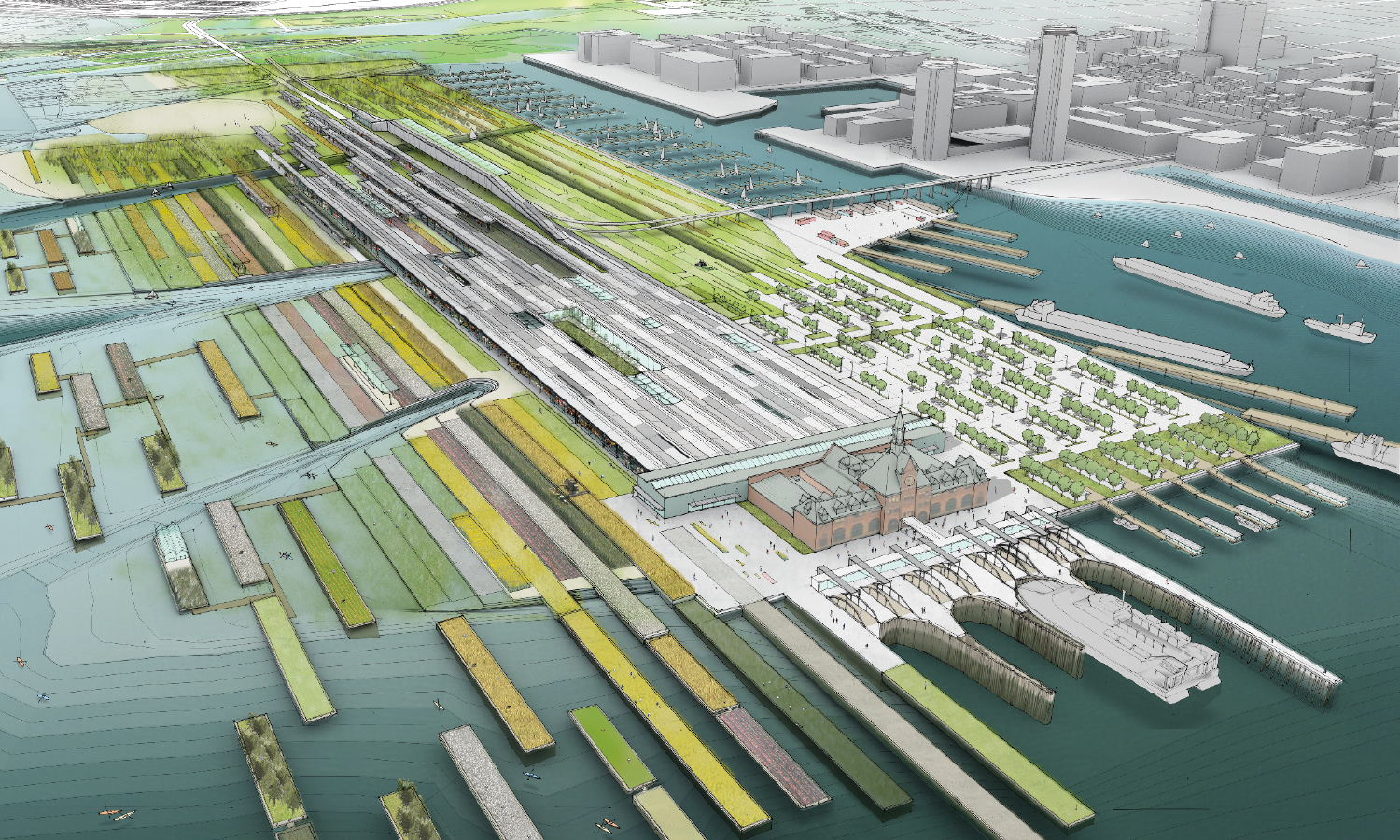
Water Proving Ground
To further illustrate the potential of overdrawing, LTL has also used this technique for masterplans and aerial visualizations. They were one of five architecture firms selected by MoMA for the workshop and exhibition, Rising Currents. The show examined the future impacts on New York Harbor of rising sea-levels brought on by global warming through a series of speculative proposals for the water’s edge. LTL’ s design focused on the site of Liberty State Park in the harbor’s Northwestern quadrant, a former rail yard constructed as a series of landfills during the early part of the 20th century and all but destined to disappear with shifting sea levels.
Integrating water as a performative component of the design, the project proposes a vibrant amphibious landscape continually activated by rising tides. By redistributing the site’s historic fill to create a series of four raised land-piers, the design multiplies the length of the existing coastline by a factor of ten. This complex edge generates a more resilient buffer to storm surge and coastal flooding and maximizes the intertidal zone as a testing ground for new uses and inhabitations based on the dynamic exchange between sea and land. Structured as a series of petri dishes, the plan incorporates a diversity of programs and multiple ecologies, combining productive landscape and urban park.
Architizer is delighted to reveal the winners of the 2025 Vision Awards! We'll continue celebrating the power of architectural representation — get on the program mailing list by clicking here.

 Park Tower
Park Tower  Water Proving Ground
Water Proving Ground 
